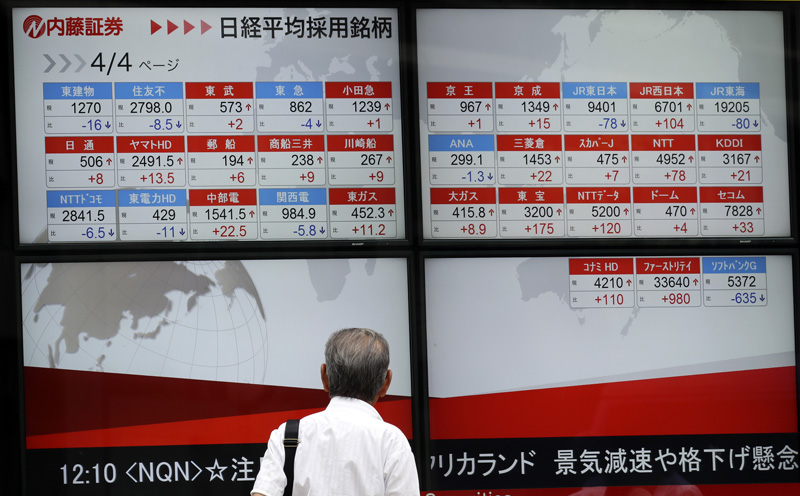Wall Street tumbles as US-China trade spat escalates
- Boeing, Caterpillar down ~1 pct on trade war fears
- Oil steady ahead of OPEC meet
- JD.Com rises after Google investment
- Indexes down: Dow 0.95 pct, S&P 0.74 pct, Nasdaq 0.75 pct
NEW YORK: The Dow Jones Industrial Average fell more than 200 points on Monday and the other major indexes were lower, as China's retaliatory action against tariffs imposed by the United States reignited fears of a possible trade war between the world's two biggest economies.
Global financial markets have struggled since February in the face of signs that Washington and Beijing were headed toward a trade war after several rounds of negotiations failed to resolve US complaints over Chinese industrial policy, market access and a $375 billion trade gap.
Boeing, the single largest US exporter to China, slipped 0.8 percent, while construction equipment maker Caterpillar fell 1.3 percent.
"The trade war is definitely on the front burner right now, and will continue to be in the absence of news catalysts and unless something substantially changes," said Art Hogan, chief market strategist, B. Riley FBR in New York.
Investors are also assessing the impact of tightening monetary policy by central banks after the US Federal Reserve raised interest rate last week and the European Central Bank said it planned to end its bond-purchase program at year-end.
Oil prices, which were lower in early global trading, steadied ahead of an OPEC meeting where top suppliers are expected to agree to increase global crude supply.
At 9:43 a.m. ET, the Dow Jones Industrial Average was down 238.78 points, or 0.95 percent, at 24,851.7, the S&P 500 was down 20.53 points, or 0.74 percent, at 2,759.13 and the Nasdaq Composite was down 57.84 points, or 0.75 percent, at 7,688.53.
JD.Com's US-listed shares were up 2.5 percent after Alphabet's Google invested $550 million in the Chinese e-commerce powerhouse.
Biotechnology firm China Biologic rose 23.3 percent after Chinese investment giant CITIC Capital Holdings offered to buy it in a deal valuing the company at $3.65 billion.
Declining issues outnumbered advancers on the NYSE for a 2.92-to-1 ratio on the downside, and for a 2.78-to-1 ratio on the Nasdaq.
The S&P 500 index showed 2 new 52-week highs and 1 new lows, while the Nasdaq recorded 24 new highs and 16 new lows.






